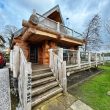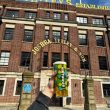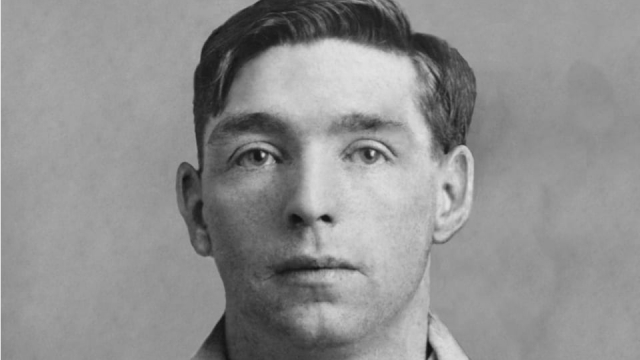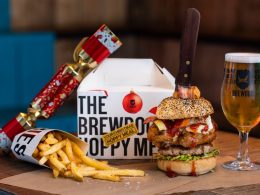There are two elements that make the life of Owen Vincent Madden unique.
One, he didn’t die behind bars. Two, he was from Yorkshire. Pick a mobster from early 20th century New York out of a hat and it’d take you a while to find one who isn’t Italian, Irish or possibly Jewish. Gangsters at that time, in that area, didn’t tend to be from the West Riding of Yorkshire.
Enter Owney “the Killer” Madden. The mob boss with the most straightforward nickname in history. Born in Leeds on Christmas day 1891 to Irish parents Francis and Mary Madden, he later moved Stateside in 1903, after the death of his father. They settled in the Hell’s Kitchen district of Manhattan, at the time highly violent, and young Owney wasted no time settling in.

Described by pals as “that banty little rooster from hell,” Owney committed his first crime aged fourteen by clubbing and robbing a man of $500. He became a part of, before taking over completely, the Gophers gang where his reputation grew and grew or fell and fell, depending on your moral slant. He earned his nickname after shooting an Italian gang member in the streets. “I’m Owney Madden!” he shouted. “10th Avenue!” No-one came forward as a witness such was the power he had.
With the power, came women, lots of women. It wasn’t unusual to see Owney accompanied by several and he ebbed and flowed through New York’s bars. But he was jealous. So jealous that one time he shot and killed a store clerk called William Henshaw for asking out one of his girls while on board a trolley.
It helped Owney’s rise that he was apparently immortal. On November 6, 1912, he was shot eleven times outside a 52nd Street dance hall by three members of rival gang the Hudson Dusters. Owney refused to identify his attackers to police. “Nothing doing,” he said. “The boys’ll get ’em. It’s nobody’s business but mine who put these slugs in me!” After a week of his release, several members of the Dusters were dead.
Two years later, Owney was sentenced to 20 years at Sing Sing Prison after ambushing and and killing Little Patsy Doyle, a member of the Dusters. But he wasn’t done there. Remarkably, Owney was let out on parole after serving just nine years in 1923.

The world was different. Especially the United States. The Gopher gang had split and Prohibition – the outlawing of manufacture, transportation, and sale of intoxicating liquor — was in effect. Owney made the best of a bad situation by bootlegging. He stuck his finger in nightclubs and show business. He turned a rotting Harlem club at Lenox Avenue and 142nd Street into the famous Cotton Club. He bankrolled the careers of George Raft and Mae West, the former of whom Owney employed as his personal driver. As for the latter, she became his girlfriend. “Sweet, but oh so vicious” is how she later described him.
By the end of the decade, Owney was a millionaire, at the head of a criminal empire that covered boxing, gambling, bootlegging and real estate. He organised a “crime commission,” with Frank Costello and Charles “Lucky” Luciano among others, to expand the business as legitimately as possible, with little to no bad publicity.
On July 7, 1932, Owney was sent back to Sing Sing for parole violations, no doubt a part of New York governor and presidential nominee Franklin D. Roosevelt’s plan to crackdown on corruption in the city. Owney was released the following year. This time, Prohibition was gone but the drive that made Owney a success after his previous release, had faded. Now in his forties and sick from old wounds, he was more of a pain in the arse to the crime syndicate than some fearsome ball-buster.
Depleted and bored, he began visiting Hot Springs, which had acted as an paradise of bootlegging, prostitution and gambling. Owney chatted up a gift-shop clerk, Agnes Demby, the daughter or the local postmaster. On November 26, 1935, they married and moved into a house on West Grand Avenue. Agnes, though not involved, knew of Owney’s connections, prison record, and outlook.

Eventually Owney left New York altogether. It is not exactly clear what cemented this decision. Some believe he may have made a deal with politicians or the likes of Lucky Luciano to oversee mob operations in Hot Springs. Major Leo P.McLaughlin and Municipal Judge Vern Ledgerwood, who ran their own syndicate in Hot Springs, denied that Owney had anything to do with their activities — though it was common knowledge that he set upthe wire service that brought racing results to bookies.
Owney kept a low profile until 1940 when he purchased a share in the Southern Club which was frequently visited by his old and new associates. Six years later, McLaughlin was voted out but local rackets soared. And Owney’s rep reemerged. As a result, he was placed under constant FBI surveillance. In 1961, after a federal investigation found Hot Springs to be the location of the largest corrupt gambling operation in the country, Owney stood before the Senate Committee on Organised Crime. He invoked the Fifth Amendment until the affair was over.
Owney remained in Hot Springs, even as the state government shut down illegal operations. A year later, on April 24, 1965, he died of emphysema.









